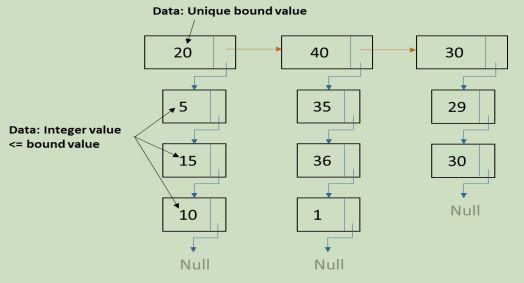ICT208 Algorithms And Data Structures Assessment
- Subject Code :
ICT208
- University :
Crown University Exam Question Bank is not sponsored or endorsed by this college or university.
- Country :
United States America
Assessment Description:
This assessment is designed to help students to analyse a case and develop appropriate data structures and finally write code.
This assessment is a group assignment. You need to form a group of 4 people and work together to complete this assessment and submit it to Moodle.
You need to present a demo of your program as a group during Week 9 tutorial time.
Any group member who fails to do so will result in a zero mark on your submission. Also, each member of the group must demonstrate their contribution to the program and to actively participate in the demo.
The lecture has the discretion to adjust team contributions based on individual contributions to the demo.
Part 1: Bounds-Numbers List case study:
In this assessment you are required to develop a bound-numbers list application in C++.
The list must be implemented by linked list. A linked list is a linear data structure, in which the elements are not stored at contiguous memory locations. The elementsin a linked list are linked using pointers as shown in the below image:

Each element in the link is called a node which is composed of two parts:
- Data stored by the node.
- Link pointed to the next node in the linked list.
The bounds-numbers list that you need to develop is shown in the below image:

The final application must meet the following functional requirements:
- User can create unlimited bound-numbers lists. Each list must associate with a unique bound value (i.e., two lists with same bound values are not allowed). See
- User can insert a new node in nested list. User inputs the bound value and then given two options to insert the node in the front or in the middle of the nested list.
- User can delete the front list from the nested list.
- User can delete an item (list) from nested list specified by the user. User inputs the bound value associated with the list to delete the item. If the list exists, then the user is prompted to enter the index of the item to delete. If the list does not exist an appropriate message is shown.
- User can merge two bound-numbers lists into a new list with maximum bound value from both lists and without duplicate numbers. For example, if we have 20 bound-numbers list with [5,10,20] and 30 bound-numbers list with [20,30], all integer numbers in both lists after removing duplicates should be merged into a new bound-numbers list so that this merged list will be 30 bound value with [5,10,20,30].
- User must be able to display the bound values of stored lists.
- User must be able to display the items (numbers) stored in a bound-numbers list specified by the user.
The bound-numbers list has the following functional requirements:
- Each node in the list stores an integer value that is entered by the user. The stored value is the integer number that is less than or equal the bound value associated with the list.
- There must be a way to insert an integer number in the list after specific node specified by the user, provided that this number is less than or equal to the bound value associated with that list. User inputs the bound value associated with the list to insert the number. If the list exists, then the user is prompted to enter the integer number for that specific node in order to insert the new number after it. If the list does not exist an appropriate message is shown.
- There must be a way to insert an integer number in the end of a list specified by the user, provided that this number is less than or equal to the bound value associated with that list.
- There must be a way to delete the last item in the list.
- There must be a way to delete all items in the list except a particular item.
- There must be a way to search the nested list for the list.
- There must be a way to print the numbersin the listspecified by user in reverse order without reversing it. For example, if we have a bound-numbers list = [10,15,20], the output should be displayed as follows without reversing the list: 20,15,10.
Note: if you are reversing the list and then print it, NO marks will be given.
Part 2: User Guide
You need to prepare a brief user guide that explain how to use the program and provide screenshots of running code for each function.
Are you struggling to keep up with the demands of your academic journey? Don't worry, we've got your back! Exam Question Bank is your trusted partner in achieving academic excellence for all kind of technical and non-technical subjects.
Our comprehensive range of academic services is designed to cater to students at every level. Whether you're a high school student, a college undergraduate, or pursuing advanced studies, we have the expertise and resources to support you.
To connect with expert and ask your query click here Exam Question Bank

